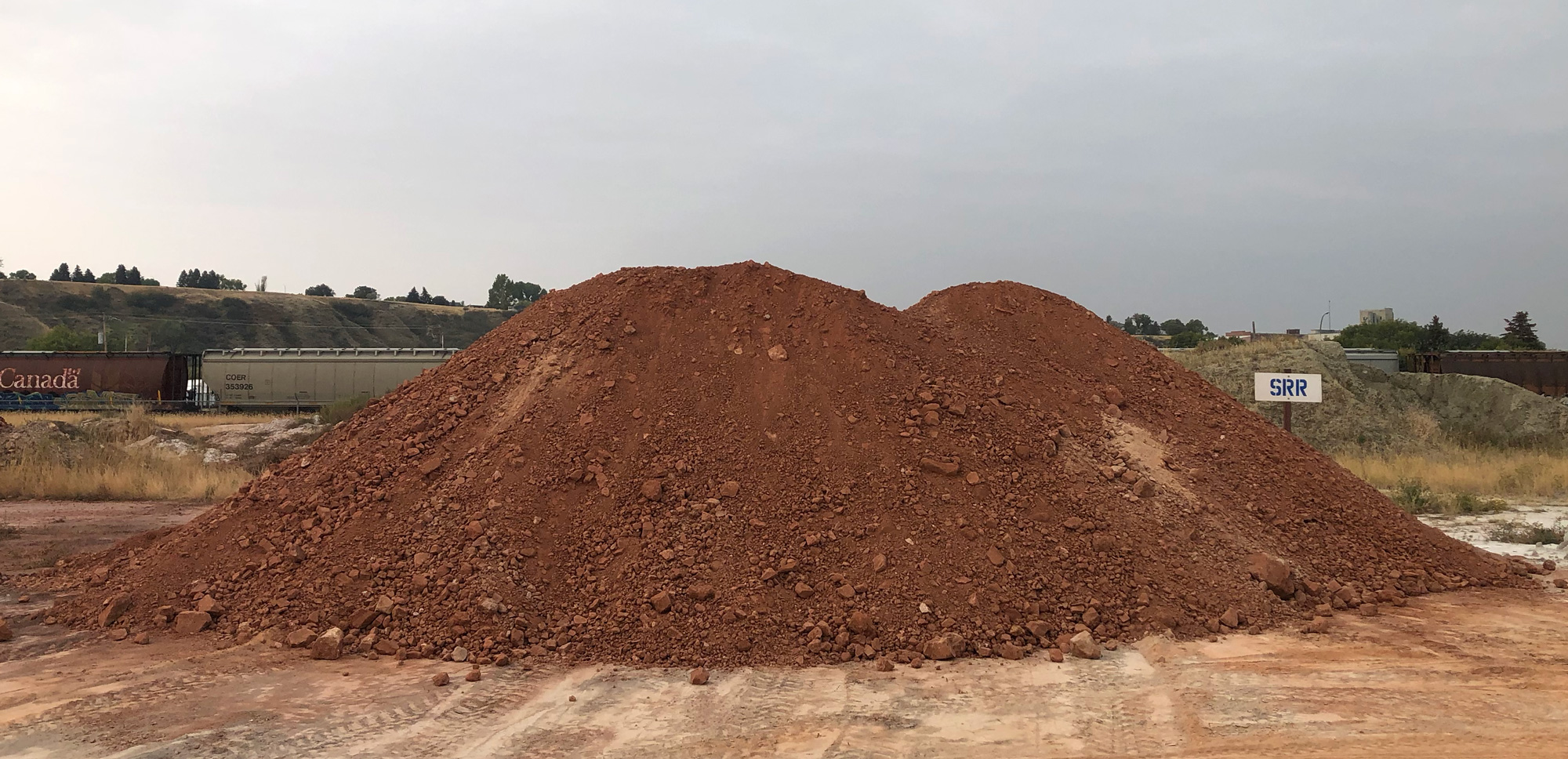| Monthly Tech-Tip | No tracking! No ads! |
The stockpile of St. Rose Red fireclay at the Plainsman plant
This is the lump form of Plainsman St. Rose Red clay, as received from the quarry. The bright red color is natural iron oxide. That iron cannot be washed out, it is part of the clay crystal structure. The pigmentation is heavy enough that even when this material is a minor part of a body recipe, that body will still fire to a dark color. The color and high cost of St. Rose Red means that it is always heavily diluted with other clays, many of which are highly plastic. Because St. Rose is non-plastic it is a perfect complement to these. It is also refractory, it melts at a much higher temperature than typical clays. It is mined near St. Rose, Manitoba.
Related Pictures
Saint Rose Red being delivered. Look what it does at cone 10R!

This picture has its own page with more detail, click here to see it.
We get this clay from St. Rose, Manitoba. Four tandem loads arrived this week. Just seeing the pile inspires me to make more pieces! It is a red fireclay and it is highly unusual. St. Rose Red has issues. They at first seem to be problems, but in combination they give it magic powers! It fires with very heavy iron speckling. The iron pigmentation is so high that it burns almost black at cone 10R. It has low plasticity. It shivers glazes: The vase on this picture lasted an hour after kiln exit, it spontaneously fractured because of the outward pressure from the under-compression glaze on the inside. But, by combining St. Rose Red with our more vitreous clays, which are highly plastic, we can make H440 and H443. A mix of only 45 St. Rose with 40 Ball clay and 15 feldspar produces a rustic metallic surface (like the cup shown). Such a body cannot be made from a low fire red clay (like RedArt), it would just warp and collapse in the kiln. It is the refractory character, heavy pigmentation, iron speckling and low plasticity of St. Rose that make metallic ware possible.
Videos
Links
| Materials |
Saint Rose Red
|
Got a Question?
Buy me a coffee and we can talk

https://backup.digitalfire.com, All Rights Reserved
Privacy Policy

